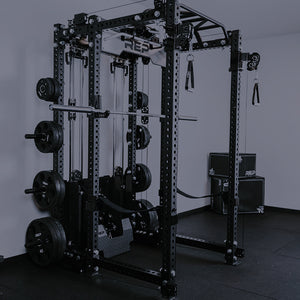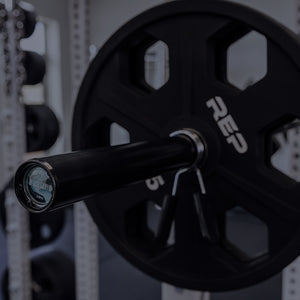
Whey protein is a popular supplement in the fitness world, known for its ability to support muscle growth and recovery.
But what exactly is whey protein? And where does whey protein come from?
Whey protein is derived from milk, specifically during the cheese-making process. When milk curdles to form cheese, the remaining liquid is separated, filtered, and then processed into a fine powder. This powder is rich in essential amino acids, making it a complete protein source.
Whey protein is popular in the gym because it's especially effective for people looking to build strength and repair muscle after a workout. Its versatility and effectiveness have made it a staple for athletes and fitness enthusiasts alike.
Versatility: Its versatility is in how it can easily be mixed into shakes, smoothies, or even baked goods, providing a convenient protein boost whenever you need it. (Read on for more ways to incorporate whey into your meal plan.) Whether you’re looking for a quick post-workout shake, a protein-packed breakfast, or an afternoon snack, whey protein is easy to fit into your daily routine.
Effectiveness: Whey’s effectiveness comes from being a complete protein, rich in branched-chain amino acids (BCAAs) that support muscle recovery and growth. The fast-digesting nature of whey protein makes it ideal for post-workout nutrition, as it quickly delivers nutrients to your muscles, helping to kickstart the recovery process right after a gym session. This combination of ease-of-use and results is why so many lifters rely on whey protein.
What’s the Best Whey Protein Powder?

If you’re on the hunt for a whey protein powder that delivers pure, effective nutrition without the extras, REP’s new Purist® protein powder is the answer. Designed with simplicity in mind, this supplement focuses on high-quality ingredients that support muscle growth and recovery.
But what exactly makes this protein powder stand out?
Purist ® protein features a blend of whey isolate and concentrate, ensuring a balance of high protein content with minimal fats and carbs. The ingredients in this protein powder focus on delivering pure nutrition without unnecessary fillers, making it perf for those who prioritize clean labels in their supplements.
Is Whey Gluten-Free?
Yes, whey protein is naturally gluten-free, making it suitable for most people with gluten sensitivities or those following a gluten-free diet. However, it's always a good idea to check the nutritional information of any supplement to ensure there’s no cross-contamination or added ingredients that may contain gluten.
REP’s Purist ® protein powder is formulated to keep things simple, ensuring that you can focus on your gains without worrying about gluten.
When to Drink Whey Protein and How Much Per Day?

Wondering when to drink your protein shake? Research has shown timing may make a difference. Many lifters drink a whey protein shake post-workout.
Consuming whey protein post-workout is widely recognized for aiding muscle recovery and growth due to its rapid digestion and high content of essential amino acids. Research has shown that ingesting whey protein soon after exercise can significantly enhance muscle protein synthesis, which is crucial for repairing muscle fibers that are stressed during workouts.
The amino acids in whey, especially BCAAs like leucine, play a key role in kickstarting the muscle repair process. Studies indicate that combining protein with carbohydrates after exercise helps replenish glycogen stores and supports muscle recovery, allowing athletes to maintain consistent training without excess fatigue.
For instance, one study highlighted that whey protein intake post-workout was associated with a reduction in markers of muscle damage, such as creatine kinase (CK), indicating its effectiveness in reducing exercise-induced stress.
But you can also enjoy protein powder as a snack throughout the day.
As for how much whey protein per day, it depends on your fitness goals and dietary needs. Typically, a serving of 20-30 grams post-workout is effective for most lifters, but you can adjust your intake based on your total protein goals and activity levels.
Does Whey Protein Cause Bloating or Constipation?
Bloating and constipation can be common concerns when introducing whey protein into your diet, especially if your gut isn't used to high-protein intake. While whey protein is generally well-tolerated, some people may experience digestive issues.
REP’s Purist ® protein is a blend of whey isolate and concentrate, which tends to be easier on the stomach compared with other options. If you notice any gut discomfort, try starting with a smaller serving and gradually increasing it to help your digestive system adjust.
Collagen Powder vs. Whey Protein: What's the Difference?
It’s easy to get confused when choosing between collagen powder and whey protein, but each has unique benefits.
Collagen powder and whey protein powder share several similarities, especially as protein supplements that support fitness and overall health.
- Both provide a significant protein boost, making them popular for those looking to increase their daily protein intake.
- Both types of protein can aid in muscle recovery and maintenance.
- In addition, both whey and collagen are known for their ease of digestion. Whey protein, especially in isolate form, is quickly absorbed, making it ideal for rapid recovery post-exercise, while collagen, which is hydrolyzed, is designed for easy digestion and absorption
- They are also versatile in how they can be used, easily mixing into shakes, smoothies, and more.
Whey protein and collagen powder differ primarily in their amino acid profiles and their intended benefits.
- Whey protein is a complete protein, containing all nine essential amino acids that are crucial for muscle growth and repair. This makes it particularly effective for supporting muscle protein synthesis, especially when consumed post-workout. Its rich content of branched-chain amino acids (BCAAs) like leucine makes it ideal for those looking to build or maintain muscle mass.
- Collagen, on the other hand, is not a complete protein; it is particularly rich in glycine, proline, and hydroxyproline—amino acids that play a vital role in maintaining the health of connective tissues like skin, joints, and ligaments
- Their sources and processing methods also set them apart. Whey protein is derived from the liquid byproduct of cheese-making, while collagen is extracted from animal connective tissues like skin, bones, and cartilage. The difference in their structure influences how each is digested and utilized by the body.
- While whey protein is known for its rapid absorption, making it perfect for quick post-exercise recovery, collagen is hydrolyzed for better digestion but works more slowly to support long-term benefits like joint health and skin elasticity.
These differences make whey protein a go-to for those focused on athletic performance, while collagen appeals to those seeking support for joint health and skin care.
In summary:
Collagen powder is derived from animal connective tissues and is excellent for supporting skin, joint, and bone health.
Whey protein is a complete protein, meaning it contains all nine essential amino acids necessary for muscle growth and repair.
Benefits of REP’s Purist ® Protein Powder

Choosing a high-quality protein supplement like Purist
® protein can make a noticeable difference in your fitness journey. Here’s a quick rundown of its benefits:
- High-quality protein from a blend of whey isolate and concentrate.
- Supports muscle growth and speeds up recovery after a tough workout.
- Low in fats and carbs, making it an ideal choice for those focused on lean gains.
- Simple ingredients without artificial flavors or fillers, making it easier to trust what you’re putting into your body.
- Versatile and easy to mix, creating a smooth, tasty shake every time.
REP’s Purist ® protein powder is more than just a supplement—it's a clean, straightforward choice for anyone looking to elevate their workout nutrition.
What Should I Mix Whey Protein With?

Whey protein is incredibly versatile, and you can mix it into a variety of foods and beverages to suit your taste and dietary needs. Here are some popular ways to use whey protein:
1. Shakes and Smoothies
The classic choice is blending whey protein with water, milk, or a plant-based milk alternative for a quick protein shake. Mix it up in a shaker cup.
Boost the nutrition by adding fruits like bananas, berries, or greens, along with nut butter or seeds for extra healthy fats.
2. Yogurt or Oatmeal
Stir whey protein into Greek yogurt, cream of rice, oatmeal, or overnight oats for a creamy, high-protein breakfast.
It enhances the flavor and adds an extra protein punch without needing to prepare a separate meal.
3. Baking
Incorporate whey protein into homemade protein bars, muffins, pancakes, or cookies.
It’s a great way to increase the protein content in baked goods while keeping them tasty and satisfying.
4. Coffee or Tea
Mix a scoop of unflavored or vanilla whey protein into your morning coffee or tea for a creamy, protein-rich twist.
It’s a simple way to start your day with a boost of protein without having to prepare an extra snack.
5. Cottage Cheese or Pudding
Stirring whey protein into cottage cheese or homemade pudding adds a rich, thick texture while boosting protein content.
This combination makes for a satisfying snack or dessert that supports muscle recovery.
6. Smoothie Bowls
Blend whey protein into a thick smoothie and pour it into a bowl, topping it with fresh fruit, nuts, granola, or seeds.
It looks yummy and is a delicious way to get your protein in.
7. Homemade Protein Ice Cream
Combine whey protein with frozen bananas or other frozen fruits in a blender to create a creamy, ice cream-like treat.
It's perfect for a high-protein dessert that satisfies sweet cravings without the added sugars.
Bottom Line
By mixing whey protein into different foods and bevvies, you can keep your protein intake varied and enjoyable, fitting into your lifestyle and dietary preferences. Whether you’re looking for a quick post-workout shake or a protein boost in your favorite treat, whey protein is a versatile option.

NEWSLETTER SIGNUP
Product launch information, promotions, blogs, and REP news.







